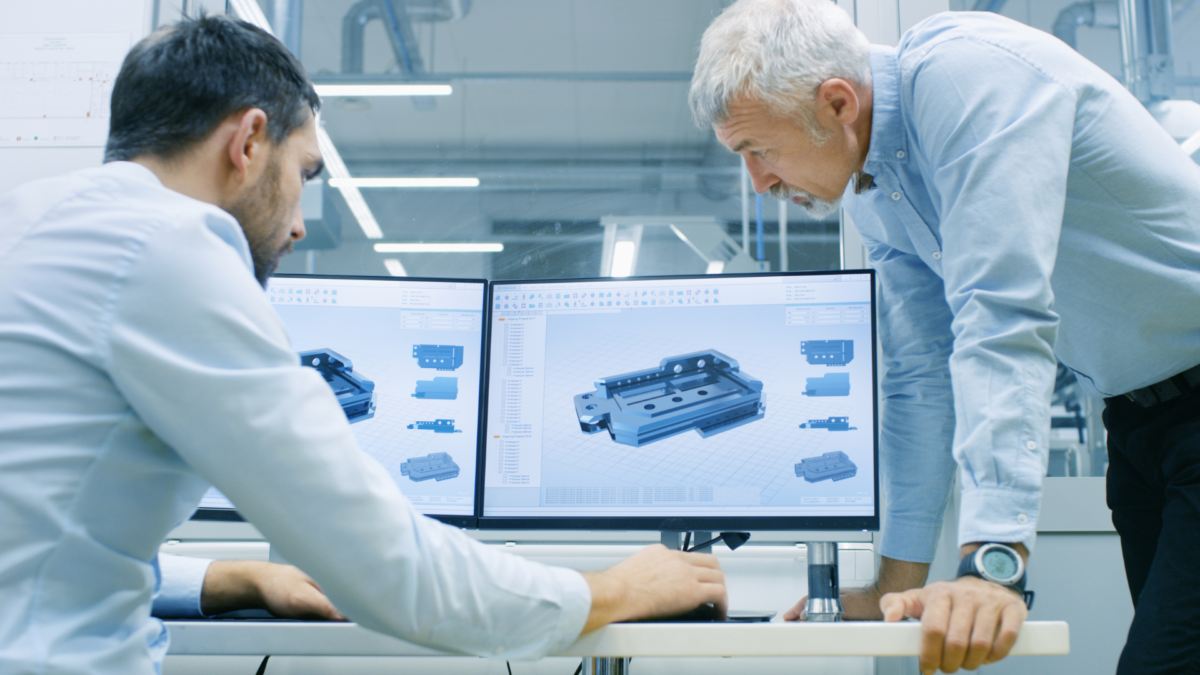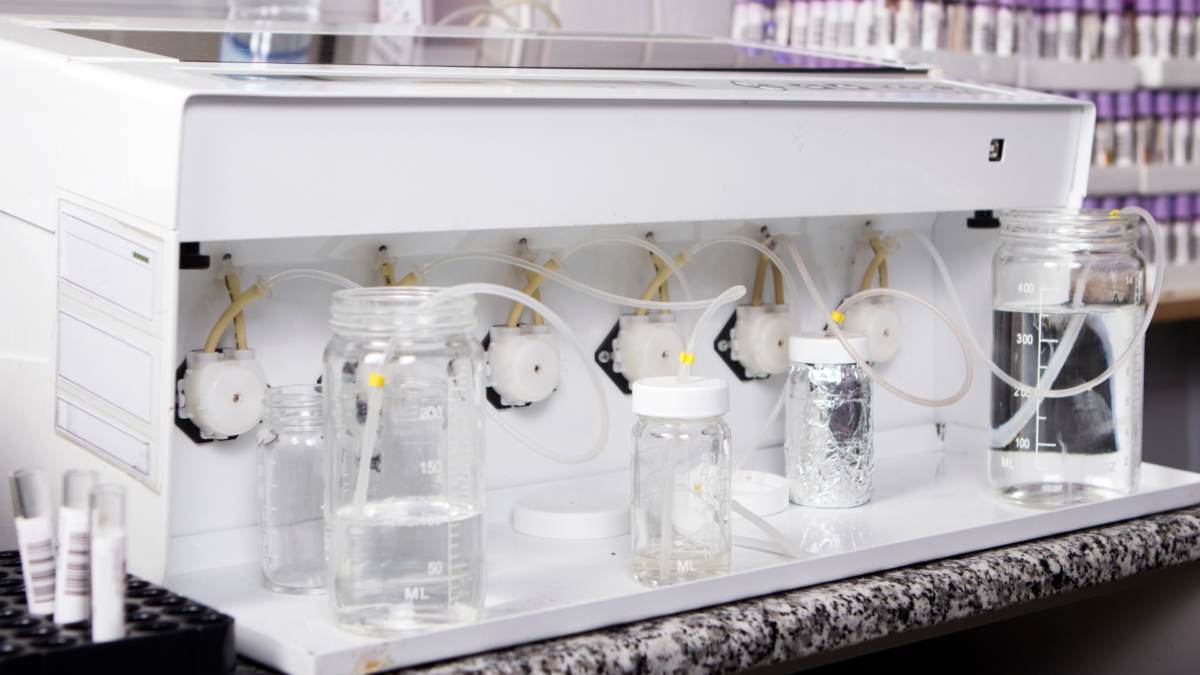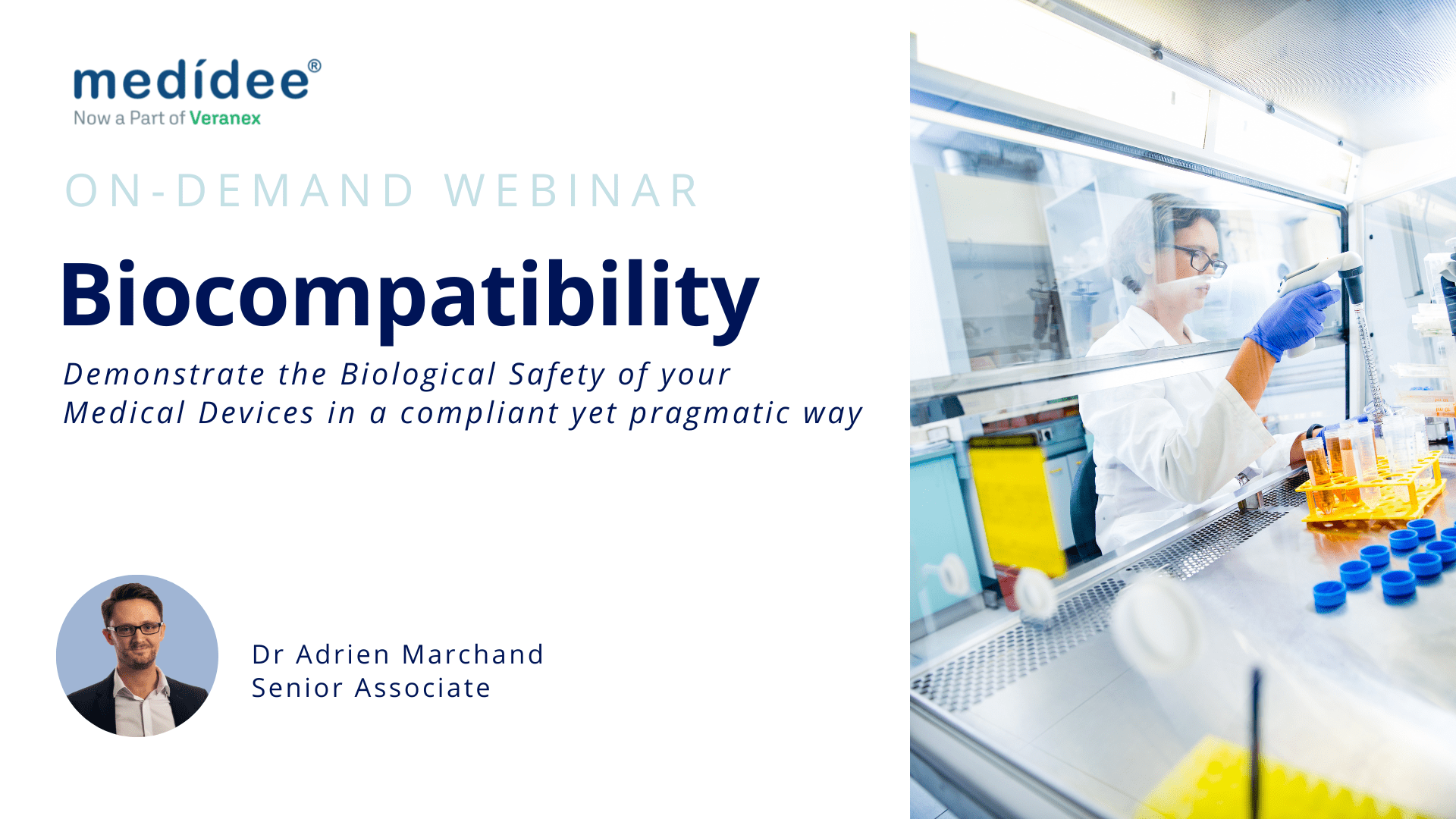[ARTICLE] Control of outsourced Design & Development activities
MedTech companies producing medical devices, while remaining the legal manufacturer from a regulatory standpoint, traditionally outsource the production of their medical devices to contract manufacturers. It is now also becoming increasingly common to see legal manufacturers outsource significant parts of their design and development (D&D) activities, in particular those related to the development of software and electronics. Similarly to a subcontracted manufacturer, it is essential for the legal manufacturer to ensure a suitable level of control over the entity the outsourced development has been entrusted with, hereafter referred to as the “contract designer”.
This article aims to present the different possible approaches that may be applied and the associated risks incurred, as well as at presenting Medidee’s recommendations for MedTech companies considering to outsource Design & Development activities (D&D).
The different type of schemes for subcontracting Design & Development activities
We have observed different types of schemes for subcontracting Design & Development activities, ranging from “high-end contract design and development with a reputable ISO 13485-certified contractor” to “my engineer has a friend handling the software design in his spare time”.
The downside to the first scenario is of course the associated costs. The clear risk with the second extreme scheme is that although such an option may initially appear attractive from a financial standpoint, the probability that the contract designers performs the Design & Development activities following a process that does not fulfill the expected quality requirements (ISO 13485, and other applicable standards such as ISO 62304) is very high.
In this case, the D&D process would have to be reviewed – or in the worst-case scenario entirely restarted with an alternative, more reliable contract designer – implying additional costs that could add up to well more than what was saved in the first place, in addition to potentially incurring considerable delays.
Thus, opting for an initially cheaper solution may easily result in “real” costs well above what would have been the case if a known, trustworthy contract designer would have been chosen.
We also observe that when design activities are contracted to a high-end certified company, the probability of compliance is also sometimes challenged because of a lack of clarity from the legal manufacturer on what he actually expects, especially in terms of risk management.
The MDR requires legal manufacturers of medical devices other than investigational devices to integrate amongst others the D&D of the device within a quality management system (QMS) (MDR Article 10(9)(g). The IVDR contains a near identical requirement for legal manufactures of IVD devices other than devices for performance evaluation (IVDR Article 10(8)(g)).
ISO 13485:2016, the reference standard for medical device QMS, states in clause 4.1.5:
When the organization chooses to outsource any process that affects product conformity to requirements, it shall monitor and ensure control over such processes. The organization shall retain responsibility of conformity to this International Standard and to customer and applicable regulatory requirements for outsourced processes. The controls shall be proportionate to the risk involved and the ability of the external party to meet the requirements in accordance with 7.4 (i.e. Purchasing process). The controls shall include written quality agreements.
The process of D&D is by essence a process that affects product conformity, and thus legal manufacturers outsourcing development activities should view contract designers as critical service providers on which a risk-proportionate level of control must be ensured. This implies a risk analysis and risk management activities in relation to the outsourcing of design activities.
THE IMPORTANCE OF A QUALITY AGREEMENT
It is essential that a robust quality agreement be established between the two parties
Importantly, the legal manufacturer remains responsible in case of non-conformities with applicable standards and regulatory requirements. As a consequence, it is essential that a robust quality agreement be established between the two parties. Depending on the external party’s perceived ability to meet applicable requirements, additional controls may be necessary.
It therefore essential to properly qualify the contract designer as a critical service provider as per section 7.4 of ISO 13485. The maturity of both the legal manufacturer’s and the contract designer’s QMS is a key consideration in these processes.
The main schemes for establishing a quality agreement are either that the legal manufacturer accepts some specific provisions of the QMS of the contract designer; or that the legal manufacturer’s QMS is extended to the contract designer. It can also go both ways, with certain Design & Development activities addressed by the contract designer’s QMS, and others by that of the legal manufacturer.
In any event, a thorough and robust quality planning should be performed. Where the contract designer is responsible for establishing the design and development and/or the verification and validation plans, these must be approved by the legal manufacturer. The dispositions for design review and the authorities therein should also be made clear from the beginning.
Furthermore, it is important to clearly define which of the legal manufacturer’s or contract designer’s procedures will be used for each specific design and/or development process.
For instance, it could be agreed that the design verification activities will be performed according to the contract designer’s SOP for design control, whereas the design validation activities are to be performed as per the legal manufacturer’s SOP. Such an approach may require an in-depth integrative analysis of the two QMS’s to ensure compatibility of the processes.
The legal manufacturer’s risk management activities must account for the risks incurred by the outsourcing of Design & Development activities and the control measures implemented to mitigate them. These will be heavily influenced by the degree of maturity of the contract designer’s QMS. Indeed, a legal manufacturer with a mature and approved QMS may lean more on its own QMS if a contract designer were to present an immature QMS, and vice-versa. A situation where both actors present young, immature QMS’s should in all cases certainly be avoided.
The quality agreement between the two parties should therefore provide a detailed description of the arrangements, responsibilities, and authorities listed above. It shall moreover account for the control measures determined to be necessary to ensure the subcontracted D&D activities are performed as per the requirements.
It shall be noted that MDR holds provisions for the inspection of the premises of subcontractors by competent authorities in the context of their market surveillance activities(MDR Article 93(3)(b)). Furthermore, for medical devices for which the assessment of conformity requires the involvement of a Notified Body, the Notified Body may proceed, where applicable, to audit the contract designer during the conformity assessment procedure (MDR Article Annex IX(2.3) or during periodic surveillance audits (MDR Article (3.3); (3.4)).
Legal manufacturers should carefully consider the levels of controls that will be necessary and their implications in terms of costs in time and money – i.e. the “real” costs - before selecting a partner who will be entrusted with the Design & Development activities of their device
Medidee’s recommendation is that legal manufacturers should carefully consider the levels of controls that will be necessary and their implications in terms of costs in time and money – i.e. the “real” costs - before selecting a partner who will be entrusted with the D&D activities of their device. We would also strongly advise legal manufacturers against carrying out their first MedTech development with a novice contract designer.
Still, it is to be noted that a small contract designer may also decide in good faith to invest the actual effort to upgrade its practices, to train its personal and obtain an ISO 13485 certification. Simply, this type of decision belongs to major strategic moves and cannot be half implemented. Should a small contract designer decide to go this way, he/she should do it completely and correctly plan the future cost that this move will induce.
Are you a legal manufacturer seeking to outsource part or all of your design and development activities? Medidee will assist you in identifying and qualifying an appropriate partner for this process, in setting up the quality planning to ensure the requirements of ISO 13485 and the MDR are met, and in the establishing a robust quality agreement suitable to your specific needs.
We also help contract designers to build and implement a plan towards the new market of MedTech.
Contact us now !
This article was written by Dr Jérôme Randall.
[ARTICLE] Future classification of IVD instruments
The new Regulation 2017/746 on in vitro diagnostic devices (IVDR) will enter into force on May 26th, 2022. The IVDR introduces a rule-based risk IVD device classification system aligned with what is applied for medical devices. This system will replace the current classification system under the IVDD which classifies IVD devices based on pre-established lists and categories of products which in turn define the appropriate conformity assessment route to achieve market access.
The IVDR establishes four risk Classes A, B, C, and D with A being the lowest risk Class and D the highest, into which IVD devices will be classified taking into account the intended use of the device. The classification of devices into the different classes is determined by seven classification rules laid out in Annex VIII.
The possible conformity assessment pathways made available to manufacturers in order to market an IVD device and the level of requirements they entail are respectively determined by and proportionate to its risk classification.
Conformity assessment procedures for Risk B, C , and D Class IVD devices require verification and certification by a notified body, whereas only the conformity assessment for Class A IVD may be conducted without verification by a notified body to establish a declaration of conformity according article 17 for “placing on the market”.
The IVDR risk classes
A major consequence of the new classification system under the IVDR is that in contrast with the current system where most IVD devices currently on the market underwent conformity assessment without verification by a notified body, the majority of devices will fall in risk classes higher than A and therefore be subject to conformity assessment procedures outlined by annexes IX, X and XI, requiring the involvement of a notified body.
The question of whether an IVD device classifies in risk Class A is therefore an essential one as this will have important implications in terms of the resources needed to achieve market access.
The rule determining if a device classifies as a Class A device is classification rule 5, which states:
The following devices are classified as class A:
- (a) products for general laboratory use, accessories which possess no critical characteristics, buffer solutions, washing solutions, and general culture media and histological stains, intended by the manufacturer to make them suitable for in vitro diagnostic procedures relating to a specific examination;
- (b) instruments intended by the manufacturer specifically to be used for in vitro diagnostic procedures;
- (c) specimen receptacles
This classification rule leads to interpretation issues, among which is point (b) regarding the classification of instruments specifically intended by the manufacturer to be used for in vitro diagnostic procedures, hereafter termed IVD instruments.
The classification by default of all IVD instruments into Class A comes somewhat as surprising
The classification by default of all IVD instruments into Class A comes somewhat as surprising. In doing so, the regulators were likely considering the typical IVD analyzer used with an analyte-specific reagent or kit or device, for instance an ELISA plate reader. In this case, the instrument would classify as Class A and the reagents and kit would be classified in their own right, in Class B or higher.
Currently an increasing number of IVD instruments can provide diagnostic information on biological markers without using additional analyte-specific reagents
Nonetheless, currently an increasing number of IVD instruments can provide diagnostic information on biological markers without using additional analyte-specific reagents. Examples include instruments measuring blood gases or glucose via its sensors, automated hematology analyzers used to identify blood conditions such as thrombocytopenia or thalassemia, or devices performing refractometry on dried plasma spots for the detection of markers for multiple conditions such as cancer or neurodegenerative diseases.
How will some instruments be impacted by the IVDR?
A simplified interpretation of rule 5 would result in its classification into Class A, regardless of the intended use or risk the condition or pathology being tested represents for the wider population. It is nonetheless our understanding that as the classification of an IVD device is governed by its intended use (implementing rule 1.1), and that if several classification rules apply to the same device, the rule resulting in the higher classification shall apply (implementing rule 1.9), the IVD instrument will be classified according to its intended use by application of the most stringent applicable classification rule.
- If more than one intended uses are formulated for the instrument, it will be classified according to the intended use which results in its classification in the higher Class(implementing rule 1.8).
- If none of the other classification rules than rule 5 were to apply, for instance for instruments intended for the analyte-agnostic analysis of compounds in human specimens, the instrument would remain in Class A.
Thus, this appears to define two types of IVD instruments:
Those forming part of a system using additional analyte-specific reagents; and those with an independent measuring function which does not use any additional analyte-specific reagents.
In the first category the instrument would classify as Class A, and the additional reagents and kits would be classified in their own right. In the second, the instrument would be classified according to its intended use and the applicable classification rule resulting in the higher classification would apply.
It is therefore capital for IVD instrument manufacturers to carefully consider the intended use of their device to ascertain that no other classification rules apply
The risk of IVD instrument misclassification under the IVDR remains nonetheless elevated. We have observed that many IVD instrument manufacturers are planning to adopt a simplified yet convenient interpretation of classification rule 5 leading to the conclusion that their instrument is in Class A, and proceed to place their product on the market following the conformity assessment procedure using article 17 without involving a notified body. It is foreseeable however that number of the latter will face the unpleasant surprise of being informed, typically during a verification by the competent authorities, that their device in fact shall be classified in a higher risk class.
In such cases, the device would require to be withdrawn from the market until conformity with the requirements associated with the higher risk class can be verified and certified by notified body, which could undeniably lead to disastrous financial consequences for the manufacturer. It is therefore capital for IVD instrument manufacturers to carefully consider the intended use of their device to ascertain that no other classification rules apply before concluding that their device classifies as Class A under classification rule 5.
The MDCG is expected to issue guidance in due time that will hopefully clarify the application of classification rule 5.
How Medidee can help
Whether you are a manufacturer of an IVD instrument already on the market seeking to prepare the transition toward the new IVDR, or a manufacturer searching to place a new IVD instrument on the market under the new regulation, Medidee will assist you in formulating a suitable intended use, in determining the appropriate classification and conformity assessment pathway for your device, as well as in the planning and execution of the activities necessary to reach compliance with the requirements of the IVDR. Contact us now!
This article was written by Dr Jérôme Randall.
[ARTICLE] ISO 14155:2020 changes to be aware of when planning, designing or conducting a clinical investigation
The new ISO 14155:2020 - Clinical investigation of medical devices for human subjects – Good Clinical Practice was released in July 2020. This third edition supersedes the 2011 version, which was updated as to conform with the upcoming MDR.
ISO 14155:2020 is expected to be harmonized rapidly without content deviations as it is the European Commission’s priority to provide a reference standard to support the provisions of the MDR pertaining to clinical investigations.
Therefore, the Annex Z showing the correlation between the requirements of the standard and those of the relevant Directives and Regulation should soon be released by the CEN (European Committee for Standardization) for harmonization under the European Directives 90/385/EEC for active implantable medical devices (AIMDD) and 93/42/EEC for medical devices (MDD), and under the European Regulation 2017/745 for medical devices (MDR). No official transitional period has been communicated for this updated standard, and thus it is considered applicable as of its date of publication.
Changes induced by the new ISO 14155:2020
Aside from the main documentary changes listed in the foreword of the standard, the major changes to be aware of when planning, designing or conducting a clinical investigation are:
-
- Clinical investigation is now 2.0: ISO 14155:2020 discusses the opportunity for remote monitoring, the acceptability of digital signature for informed consent forms and the validation process for eCRFs systems.
-
-
- Clinical investigations must be registered in a publicly accessible database, such as clinicaltrials.gov. The registration must be updated and results must be published after the completion of the investigation. Previously, certain countries required registration, whereas others did not.
-
-
- It is now an obligation to publish the investigation’s results, whether positive, inconclusive or negative. Previously, the standard only encouraged sponsors to do so.
-
- New concept of Serious health threat as a signal that indicates an imminent risk of death and requires immediate actions to be taken by the sponsor and/or the investigator.
-
- Clinical investigations, like all other medical devices related processes, should be planned, designed and conducted following a risk-based approach. Whether it is related to monitoring or adverse events reporting, risk management activities should be performed throughout the process of a clinical investigation. The newly added Annex H specifies the ties with ISO 14971.
-
- Description of the feedback loop with clinical evaluation and risk management activities, such as the use of the clinical evaluation to justify the clinical development stage, and the clinical investigation design and the update of the benefit-risk analysis.
-
- Clinical quality management is reinforced, including CAPA process.
-
- The selection of the investigation site should be performed carefully, as it is now specified that facilities should be representative of the intended use environment.
-
- In case of device deficiencies, the sponsor is now prompted to recover and analyse the faulty device.
-
- Contract Research Organizations (CROs) should be qualified suppliers of the sponsor, according to the sponsor’s QMS.
-
- The newly added Annex I brings welcome clarifications on the applicability of the requirements of this standard to the different clinical development stages and includes a useful table for the planning and design of clinical investigation in all phases of the medical device lifecycle.
-
- The sponsor must select a local representative if the sponsor is not located in the country of the study. Previously, this was requested by certain local regulations, but not in all countries.
As a medical device manufacturer, we recommend you start your transition today:
- Plan and document your transition activities;
- Implement ISO 14155:2020 in your QMS and perform a gap analysis to identify any shortcomings with the requirements of the new standard;
- Provide internal training on the new standard and affected SOPs (related processes such as risk management, clinical evaluation, CAPA, etc. are particularly relevant to consider);
- Review / Update templates for future clinical investigations (Clinical Investigation Plan, Investigator’s Brochure, etc.);
- Validate your eCRF system if not already done;
- Update contracts with your CRO and make sure they are formally qualified as a supplier.
This article was written by DR Jérôme Randall.
If you are eager to learn more about the changes incurred and gain knowledgeable insights on the application of this standard for clinical investigation planning, design, and conduct, make sure to join our ISO 14155:2020 online training, recognized by Swissethics for Investigator & Sponsor-Investigator Levels.
Furthermore, as a Contract Research Organization (CRO), Medidee will assist you with all aspects of your clinical investigation activities, from creating and submitting Clinical Trial Applications to Ethics Committees and Competent Authorities, through to initiating, monitoring and writing Clinical Investigation Reports. Contact us now!
[WEBINAR] Demonstrate the Biological Safety of your Medical Devices in a compliant yet pragmatic way
Biocompatibility of medical devices is a critical and evolving subject. As soon as a device has any direct or indirect tissue contact, FDA and other authorities will need biocompatibility information in the submission.
But what is exactly Biocompatibility?
What aspects of biological risks should one think of?
Is it mandatory to execute all the tests recommended in the annex of ISO 10993-1?
Where can one find relevant data to show biological safety-related evidence of medical devices?
When is the right moment for testing my device/prototype?
In order to avoid delays in the development and approval process, it is important to understand the full biocompatibility workflow needed for each unique device. During this on-demand webinar, let you guide by our expert DR Adrien Marchand through the Biocompatibility Workflow, including:
- The basic concepts of Biocompatibility
- The development of the Biological Evaluation Plan as per ISO 10993-1
- The importance of device classification based on duration and type of patient contact
- The considerations and identification of biological risks
- The source of biological safety-related evidence
- The importance and nature of Chemical Characterization
- The appropriate tests to conduct
- The challenges you need to know
WATCH THE WEBINAR
Please submit the form to watch:





